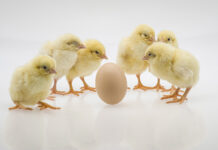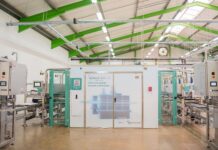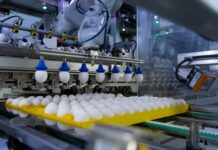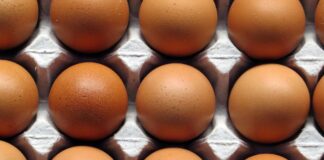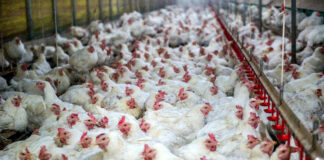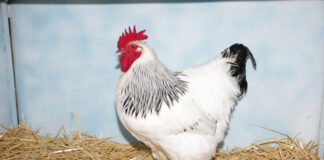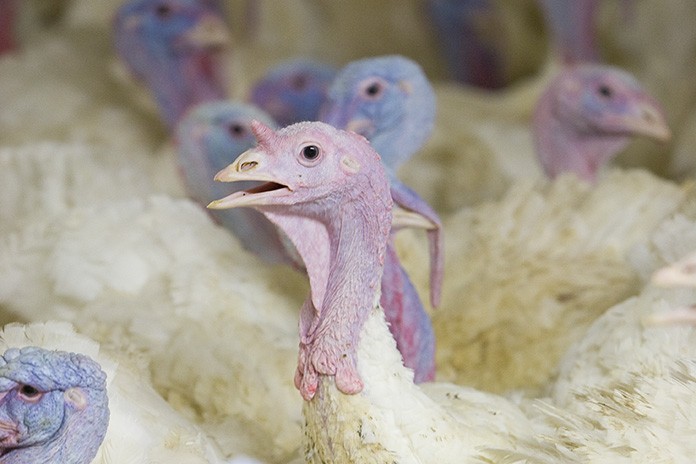
Ensuring Turkey breeder health is critical to maximize future egg production and apply accurate selection of males to maximize the genetic potential of offspring. The health of turkey breeders is critical to ensure the economic production of high quality fertile hatching eggs in order to produce poults which meet the demands of the commercial industry, which now includes: raised without antibiotics, organic and poults which may be transported up to 20 hours. Additional demands now come from retailers, consumers and the general public who all have high expectations and demands of how their food is produced and animals cared for. In the past, these applied only to commercial turkeys, but now these requirements are being applied to hatcheries and breeding source flocks.
Here we will focus on both the direct and indirect challenges to turkey breeder health and the turkey breeder industry which include the following:
- Increasing demand for salmonella negative eggs.
- Higher biosecurity levels to minimize disease breaks and reduce salmonella plus farm security to prevent theft and vandalism.
- Lack of diagnostics and understanding of the epidemiology of new and rapidly changing disease agents such as Reovirus.
- Availability of capable workers : expertise plus work ethic and commitment.
- Animal activists who target standard industry practices (artificial insemination, beak trimming, euthanasia and the retention of hens with injuries ).
- The increased time commitment to ensure that biosecurity and welfare programs are being implemented, that workers are trained and competent.
- Audit compliance in the areas of Welfare, HAACP, Worker Safety, Environment.
Direct health challenges: includes those conditions that cause morbidity, mortality, affect on egg/semen production or impact on poult performance. Examples include: Fowl Cholera, Influenzas, Cellulitis, Avian Metapneumovirus, Mycoplasma gallisepticum (MG)/ synoviae (MS) and Turkey Arthritis Reovirus (TARV). With the exception of the last agent (TARV), these are the easiest to deal with because in general, we have a good understanding of how these disease agents operate and what we need to do to prevent, treat or manage them. This is not to imply that these diseases are without economic impact or logistical difficulties to contain the spread.
A few years ago in North Carolina, the most likely source of an outbreak of MG in turkey breeders was felt to be due to people entering the barns to steal feed for backyard flocks. No amount of conventional biosecurity could have prevented this. The company in question, in addition to incurring the costs of depopulating the farm and loss of eggs, had to invest in physical security for their farms, which included 3 stranded electrical fences, motion activated video surveillance and reinforced locks on all doors.
Turkey breeding flocks are no longer immediately eliminated because they are MS positive. This change occurred due to several factors including: the increased risk posed by positive broiler breeders within the immediate geographic area, the impact on the processing plant (empty shackles if no poults placed), economic cost and lack of negative eggs to replace those from MS positive breeders. Due to strain variation, some cases of MS have resulted in very little effect on the progeny while others have caused significant leg and respiratory issues in the commercials. The challenge to companies with MS positive breeders is trying to minimize the spread by concentrating the hatching and placement of the progeny. Although medication of the breeder hens may decrease the shedding rate, poults should be considered positive and care taken not to place them on farms dedicated to antibiotic free production. As breeder eggs move around the country the possibility of cross contamination and spread of disease agents increases. This applies to not only mycoplasmas but also TARV. Good record keeping and traceability is important to facilitate analysis and trace back from affected commercial flocks to the source breeder flocks. At the moment TARV, is likely the most challenging of breeder disease agents due to lack of understanding of transmission and availability of diagnostics. Unvaccinated breeder flocks exposed in lay have resulted in commercial progeny with severe mobility issues, increased culling and birds unable to walk to the loaders. Use of autogenous vaccines has helped decrease the impact in the commercials but the rapid emergence of new strains of TARV, has resulted in clinically disease. In addition, it may take many months before an autogenous product is available. Also unlike the broiler breeder industry live vaccines are not available to serve as primers.
With the new directives on salmonella standards for ground turkey, further demands will be placed on breeders. One company that experienced a salmonella recall, in 2011, estimates that the salmonella reduction practices they put in place resulted in an additional cost of $0.06 per egg (not including the hatchery and feed mill interventions). This included barn cleaning and disinfection using contract crews and formaldehyde, increased downtime from 3 to 4 weeks (3% less eggs), improved structural integrity of barns including roll doors that sealed completely, 3 strand electric wire around farm perimeters, contract rodent control, changing to egg sanitation machines, additional monitoring to determine the effectiveness of interventions and flock status plus the use of vaccines, probiotics and litter amendments.
Indirect Health Challenges: are those, which require increased resources to ensure that our flocks are receiving the level of care and management necessary to increase consumer confidence and show transparency. The first challenge the breeder industry faces is hiring of competent workers. Many young workers come from Generation Y also known as the Millennials (birth years from ear early 2000’s). They are the first generations to often termed “media addicts”. They thrive on work electronic “contact”. They value family time and their traits do no mesh with what is expected of a worker on a turkey breeder farm. In addition, agriculture in general is not attractive to this group. Different ethnic groups do not share this same description but immigration laws put constraints in place. Some companies have invested in offering summer internship positions hoping that students will want to return to work within their operations upon graduation.
The second challenge is regarding animal welfare or more precisely the perception of the welfare of the birds. The turkey breeder industry is quite vulnerable because of the number of times we physically handle birds for vaccination, selection, insemination and movement. Each time, there is a chance that birds will not be handled correctly. It is not the 99.9% of birds that are handled correctly, but rather the focus in on the 0.1% that were not handled in the best way, or the bird with an eyelid lesion or scratch on the side. The implementation of animal welfare programs and the training necessary to ensure that all employees are competent consumes a lot of resources. Recently the National Turkey Federation developed a specific breeder audit. This is extremely useful as companies can now document that their practices are consistent with industry standards. In years past, the breeder farm managers biggest concern with regard to turkey health was keeping out well know disease agents. Today’s manager needs to improve animal welfare in order to maximize egg production, all the while trying to manage labor constraints plus human safety concerns, to provide the level of care and biosecurity necessary to optimize the health of the breeders on the farm. Few companies want to build new breeder facilities and many would happily relinquish the production of hatching eggs due to the high investment and risk involved. Despite vigorous biosecurity programs, influenza and mycoplasma breaks still occur and animal welfare standards will continue to increase. The demands by the commercial industry for salmonella negative poults will continue. All of these factors individually or together continue to make the turkey breeder industry both a challenging and demanding industry to work within.


